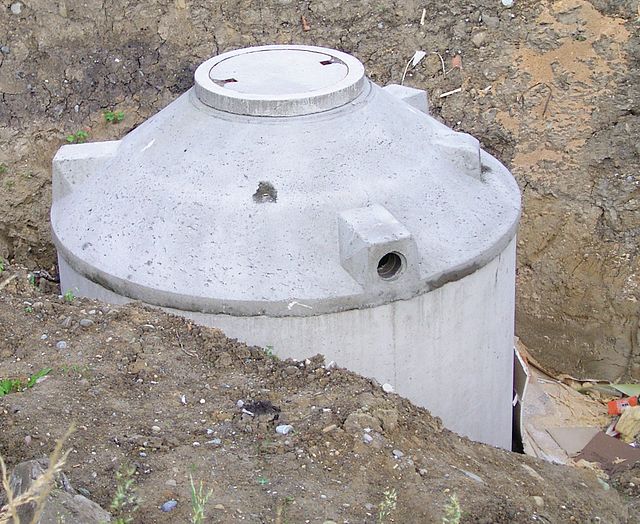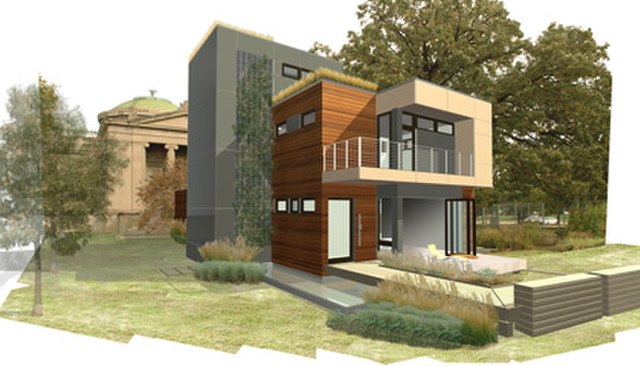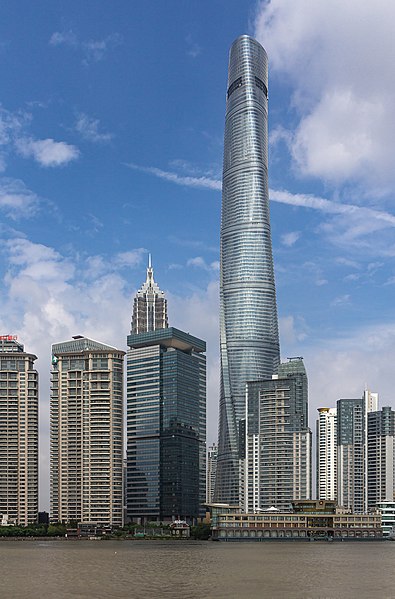An autonomous building is a building designed to be operated independently from infrastructural support services such as the electric power grid, gas grid, municipal water systems, sewage treatment systems, storm drains, communication services, and in some cases, public roads.
The bathroom of an Earthship, featuring a recycled bottle wall
A domestic rainwater harvesting system
A concrete under-floor cistern being installed.
A composting toilet
Green building refers to both a structure and the application of processes that are environmentally responsible and resource-efficient throughout a building's life-cycle: from planning to design, construction, operation, maintenance, renovation, and demolition. This requires close cooperation of the contractor, the architects, the engineers, and the client at all project stages. The Green Building practice expands and complements the classical building design concerns of economy, utility, durability, and comfort. Green building also refers to saving resources to the maximum extent, including energy saving, land saving, water saving, material saving, etc., during the whole life cycle of the building, protecting the environment and reducing pollution, providing people with healthy, comfortable and efficient use of space, and being in harmony with nature. Buildings that live in harmony; green building technology focuses on low consumption, high efficiency, economy, environmental protection, integration and optimization.’

US EPA Kansas City Science & Technology Center. This facility features the following green attributes: LEED 2.0 Gold certified Green Power Native Landscaping
Hanging gardens of One Central Park, Sydney
Blu Homes mkSolaire, a green building designed by Michelle Kaufmann.
Shanghai Tower, the tallest and largest LEED Platinum certified building in the world since 2015.








